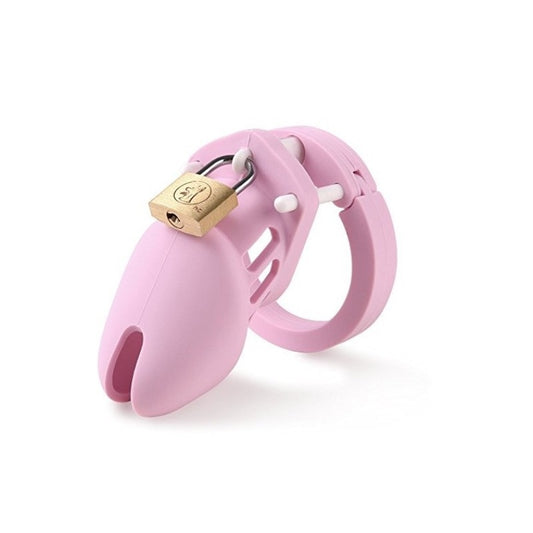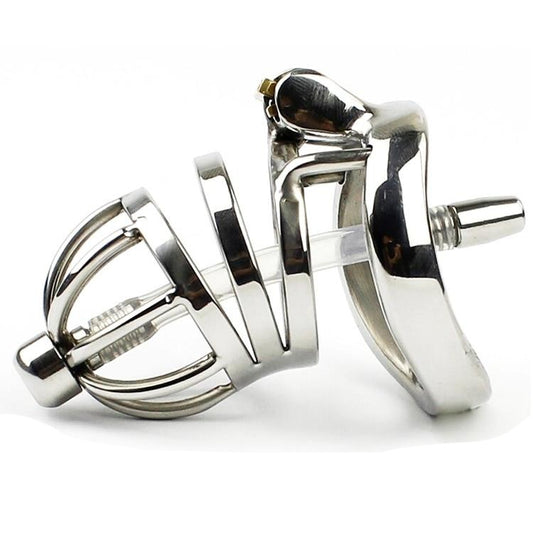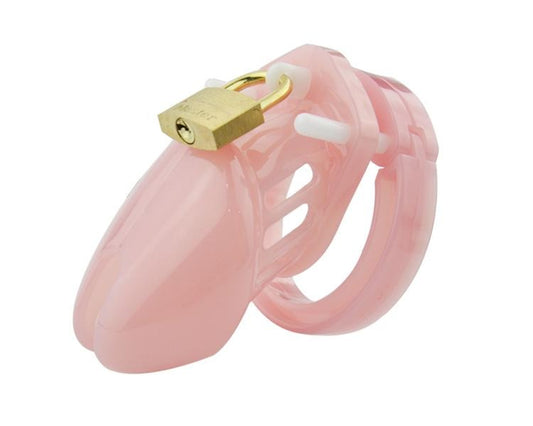In the realm of intimate exploration and personal expression, the use of chastity devices has gained significant attention in recent years. As the popularity of these devices continues to grow, many individuals find themselves wondering about the legal implications of owning and using them. In this comprehensive guide, we'll delve into the complex landscape of chastity device legality, providing you with the information you need to navigate this topic with confidence.
Understanding Chastity Devices
Chastity devices, also known as male chastity devices, are a type of intimate accessory designed to restrict or control an individual's sexual activity. These devices come in a variety of forms, from simple rings to more intricate cages, and are often used in the context of BDSM (Bondage, Discipline, Dominance, Submission, Sadism, and Masochism) practices or as part of a lifestyle choice.
The primary purpose of chastity devices is to limit or prevent the wearer from engaging in sexual activity, often as a means of enhancing power dynamics, exploring submission, or fulfilling specific fantasies. While the use of these devices is a personal choice, it's essential to understand the legal implications and ensure that your activities are within the bounds of the law.
Legal Considerations
The legality of chastity devices can vary significantly depending on the jurisdiction and the specific circumstances surrounding their use. In many countries, the ownership and use of chastity devices are generally legal, as they are considered to be a form of personal expression and intimate exploration.
However, it's important to note that the legality of chastity devices may be influenced by several factors, including:
-
Age of Consent: In some regions, the use of chastity devices may be restricted or prohibited for individuals below the age of consent, as it could be considered a form of sexual activity involving minors.
-
Consent and Coercion: The use of chastity devices must be based on the informed and enthusiastic consent of all parties involved. Any form of coercion or non-consensual use could be considered a criminal offense.
-
Public Indecency and Obscenity Laws: In certain jurisdictions, the public display or distribution of chastity devices may be subject to laws regarding public indecency or obscenity. It's essential to ensure that your use and possession of these devices comply with local regulations.
-
Workplace and Professional Considerations: The use of chastity devices may have implications in professional or workplace settings, as some organizations may have policies or codes of conduct that prohibit the use of such devices during work hours or on company premises.
It's crucial to research the specific laws and regulations in your area to ensure that your use of chastity devices is legal and compliant. Consulting with legal professionals or organizations that specialize in BDSM and kink-related matters can also provide valuable guidance and support.
Responsible Use of Chastity Devices
Regardless of the legal status of chastity devices, it's essential to approach their use with the utmost care and responsibility. Proper safety protocols, open communication, and the establishment of clear boundaries are crucial when engaging in activities involving these devices.
Here are some key considerations for the responsible use of chastity devices:
-
Consent and Communication: Ensure that all parties involved in the use of chastity devices have provided enthusiastic and informed consent. Engage in open and honest communication about expectations, boundaries, and safety measures.
-
Safety and Hygiene: Properly fit and maintain the chastity device to prevent any physical harm or discomfort. Regularly clean and disinfect the device to maintain good hygiene and prevent infections.
-
Aftercare and Support: Establish a plan for aftercare, which may include emotional support, physical comfort, and the gradual reintegration into everyday life after the use of the chastity device.
-
Respect for Privacy and Discretion: Recognize the sensitive and personal nature of chastity device use and maintain the privacy and discretion of all individuals involved.
By prioritizing safety, consent, and responsible practices, you can engage with chastity devices in a manner that aligns with legal and ethical standards, while also honoring your personal desires and exploring your intimate self-expression.
Conclusion
The legality of chastity devices is a complex and nuanced topic that requires careful consideration and research. While the ownership and use of these devices are generally legal in many jurisdictions, it's essential to be aware of the specific laws and regulations in your area.
By understanding the legal landscape, prioritizing consent and safety, and engaging in responsible practices, you can explore the world of chastity devices with confidence and fulfillment. Remember, your personal exploration should always be guided by respect, communication, and a commitment to ethical and lawful conduct.
If you have any further questions or concerns about the legality of chastity devices, it's recommended to consult with legal professionals or organizations that specialize in BDSM and kink-related matters. They can provide you with the guidance and support you need to navigate this topic with clarity and peace of mind.




















